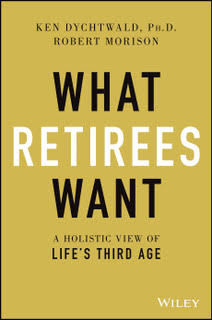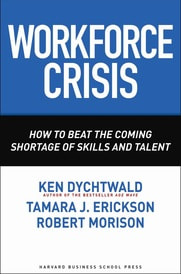What Retirees Want: A Holistic View of Life's Third Age
|
In past decades, marketers and entrepreneurs have focused on younger generations, mostly ignoring retirees. Retirement was often viewed as a time of gradual decline and financial contraction. But thanks to increased lifespans and better health care, today’s retirees—particularly Baby Boomers—are experiencing a distinct and rewarding phase of life, ready to explore new activities, new meanings, and new opportunities. Given that this demographic also controls the largest concentration of personal wealth, businesses are missing out if they continue to ignore this large and growing market.
With Ken Dychtwald, PhD, Wiley, 2020 |
Analytics at Work: Smarter Decisions, Better Results
|
Most companies have massive amounts of data at their disposal, yet fail to utilize it in the most productive and innovative ways. But a a variety of powerful analytical tools and techniques are enabling firms to aggressively leverage their data in key business decisions and processes, with impressive results. The authors reveal the success factors for analytical initiatives, how enterprises become more information-driven and analytical, and how any manager can effectively deploy analytics in day-to-day operations – one business decision at a time.
With Thomas H. Davenport and Jeanne G. Harris, Harvard Business Press, 2010 Also available in Japanese, Korean, Portuguese, and Chinese (Simple) |
Workforce Crisis: How to Beat the Coming Shortage of Skills and Talent
|
Unprecedented shifts in the age distribution and diversity of the global labor pool are under way. As the massive boomer generation retires and fewer skilled workers are available to replace them, companies in industrialized markets will face a labor shortage and brain drain of dramatic proportions. The authors argue that companies ignore these shifts at great peril. Survival will depend on redefining retirement and transforming management and human resource practices to attract, accommodate, and retain workers of all ages and backgrounds.
With Ken Dychtwald and Tamara J. Erickson, Harvard Business Press, 2006 Also available in Chinese (Complex) and Spanish |
Articles in Harvard Business Review
"Teaming Up to Crack Innovation and Enterprise Integration" (November 2008)
Your company is continuously creating new generations of products, services, and business processes. These innovations require seamless collaboration across your firm's different parts. But in most large corporations, innovation and integration are unnatural acts. Resistance stifles new ideas, and silos block cross-functional cooperation some companies are overcoming these boundaries by establishing new types of cross-organizational teams.
"Managing Middlescence" (March 2006)
Burned out. Bottlenecked. Bored. That's the current lot of many midcareer employees – those 35 to 54 years of age. If your company is like most, midcareer managers and employees make up half your workforce. Neglect their discontent, and you risk losing valued performers who seek exciting work elsewhere. Disaffected middlescents who stay because they need the money take an even worse toll: Their lack of energy, innovation, and focus erodes your firm's productivity.
"It's Time to Retire Retirement" (March 2004), Winner of a 2004 McKinsey Award
How to prevent the mass retirement of baby boomers from starving your business of talent? Replace the traditional notion of retirement – whereby people stop working at a certain age – with a more flexible one that encourages people to become lifelong contributors to your company. Many older workers don't want lives of pure leisure. They hunger to learn, grow, and try new things. Retire retirement in its traditional sense, and you solidify your connection with older employees – before competitors can snap them up.
Your company is continuously creating new generations of products, services, and business processes. These innovations require seamless collaboration across your firm's different parts. But in most large corporations, innovation and integration are unnatural acts. Resistance stifles new ideas, and silos block cross-functional cooperation some companies are overcoming these boundaries by establishing new types of cross-organizational teams.
"Managing Middlescence" (March 2006)
Burned out. Bottlenecked. Bored. That's the current lot of many midcareer employees – those 35 to 54 years of age. If your company is like most, midcareer managers and employees make up half your workforce. Neglect their discontent, and you risk losing valued performers who seek exciting work elsewhere. Disaffected middlescents who stay because they need the money take an even worse toll: Their lack of energy, innovation, and focus erodes your firm's productivity.
"It's Time to Retire Retirement" (March 2004), Winner of a 2004 McKinsey Award
How to prevent the mass retirement of baby boomers from starving your business of talent? Replace the traditional notion of retirement – whereby people stop working at a certain age – with a more flexible one that encourages people to become lifelong contributors to your company. Many older workers don't want lives of pure leisure. They hunger to learn, grow, and try new things. Retire retirement in its traditional sense, and you solidify your connection with older employees – before competitors can snap them up.



